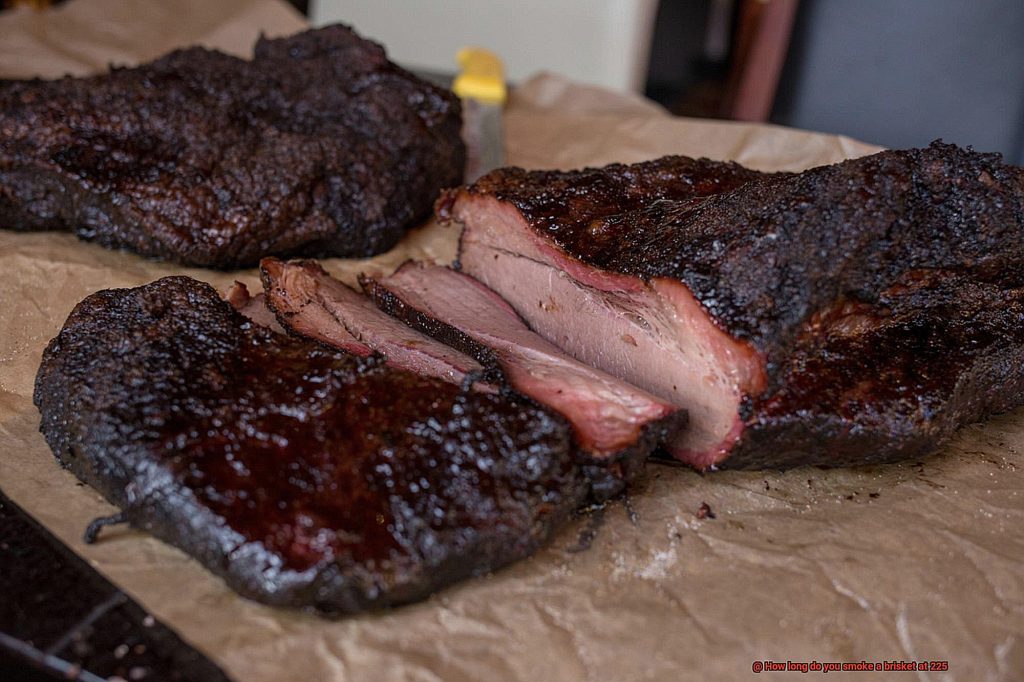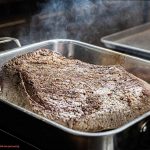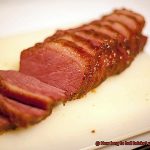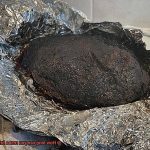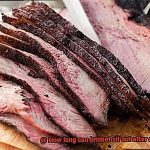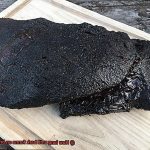Smoking a brisket is no small feat.
It’s an age-old tradition that requires patience, attention to detail, and a little bit of know-how. But fear not, because we’re here to answer one of the most common questions: “how long do you smoke a brisket at 225°?”
First things first, let’s talk about size. The size and thickness of your brisket will play a significant role in determining how long it needs to be smoked.
But that’s not all – the type of smoker you’re using, the quality of the meat, and even environmental factors can impact your smoking time and flavor profile. But don’t worry, we’ve got your back.
In this article, we’ll cover everything from selecting the perfect brisket to maintaining an optimal temperature and seasoning your meat just right. And of course, we’ll give you an estimated smoking time based on your brisket’s measurements.
Whether you’re a seasoned pro or a newbie trying their hand at smoking for the first time, keep reading to learn all about smoking brisket at 225°.
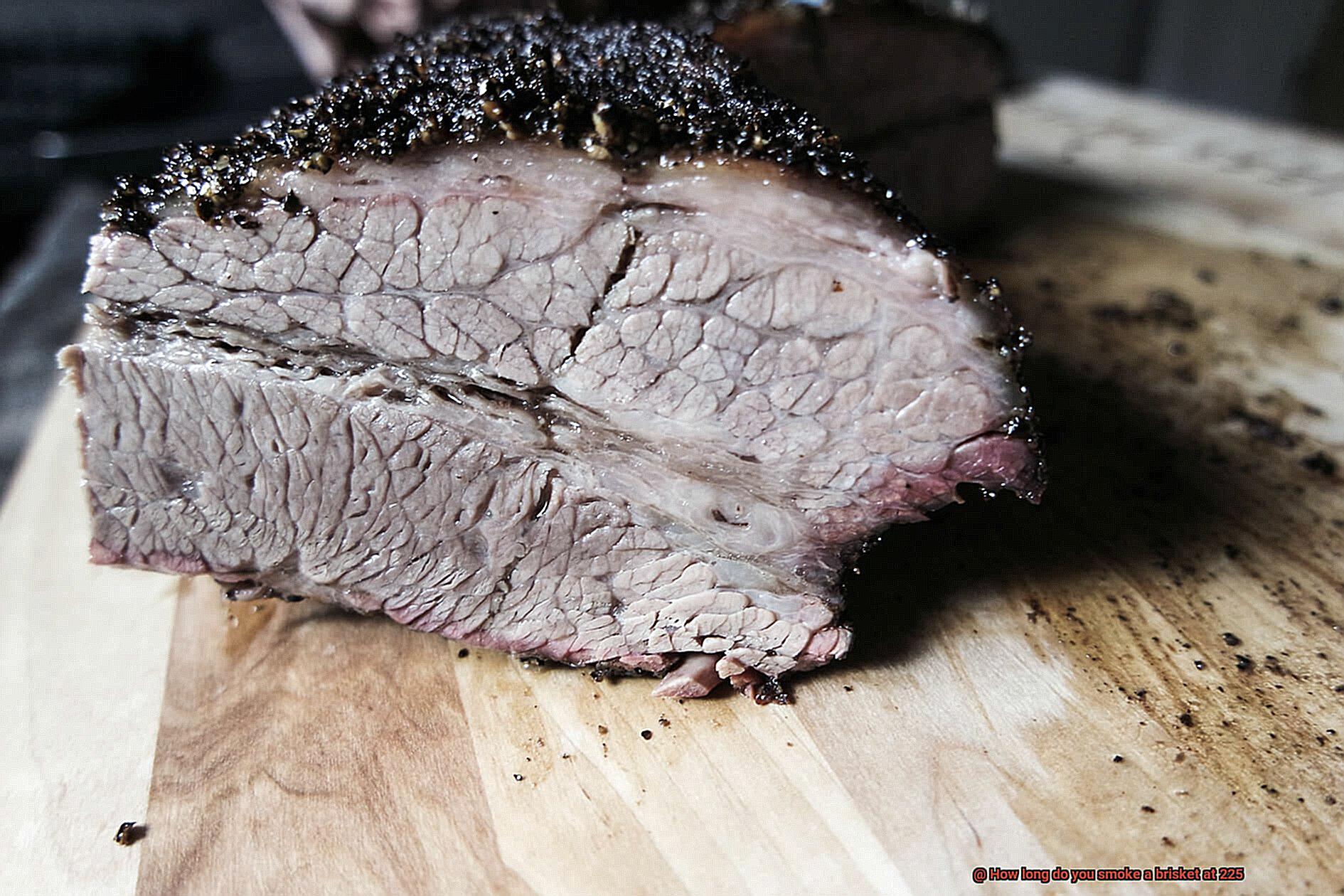
Contents
Ideal Temperature for Smoking Brisket
The key to achieving a tender and flavorful smoked brisket is to cook it at the ideal temperature of 225°F.
This temperature allows the meat to cook slowly, resulting in a rich smoky flavor while keeping the meat moist and juicy. To ensure that your brisket is cooked to perfection, maintaining a consistent temperature is crucial.
Any fluctuations in temperature can cause uneven cooking, resulting in a dry and tough brisket. You can prevent this by using a reliable smoker thermometer to monitor the temperature throughout the entire cooking process.
It’s important to note that the ideal temperature can depend on the size of your brisket. A 5 lb brisket may take around 6-8 hours to smoke at 225°F, while a 10 lb brisket may require closer to 12-16 hours.
Always plan ahead and allow yourself plenty of time for your brisket to cook. Additionally, the type of smoker you’re using can also affect the ideal temperature for smoking.
Check your smoker’s manual for specific recommendations as some may require slightly higher or lower temperatures for optimal cooking. Once your brisket is done smoking, don’t slice it right away.
Let it rest for at least 30 minutes before serving. This allows the juices to redistribute throughout the meat, resulting in a more tender and flavorful final product.
Remember to maintain a consistent temperature, plan ahead for cooking time, and let your brisket rest before serving.
Smoking Times for 5 lb and 10 lb Briskets
Smoking brisket is an art that requires time, patience, and dedication.
It’s like a slow dance where you have to be present every step of the way. But when everything falls into place, the result is a smoky masterpiece that’s sure to make your taste buds sing.
The cooking time is one of the most important factors to consider when smoking brisket. The weight of the meat determines how long it takes to cook it to perfection.
For instance, a 5 lb brisket cooked at 225°F will take around 7-9 hours to reach an internal temperature of 195-205°F. Meanwhile, a 10 lb brisket will take between 12-16 hours.
Please note that these are just estimates and that several factors can affect the cooking time, such as the type of smoker used, outside temperature, and altitude. To ensure your brisket is cooked to perfection, always use a meat thermometer.
If you’re looking for more detailed information on smoking times for brisket based on weight, there are a variety of charts available online. These charts typically include cooking times for briskets ranging from 4 lbs all the way up to 20 lbs or more.
When smoking a brisket at 225°F, monitoring the meat’s internal temperature is crucial. The desired temperature range is between 195-205°F.
Once the internal temperature hits around 160-170°F, it’s best to wrap the brisket in foil or butcher paper. This method helps keep the meat moist and tender while also speeding up the cooking process.
However, using a meat thermometer and referring to smoking time charts will help ensure your brisket comes out perfect every time.
Using a Meat Thermometer to Check Internal Temperature
Smoking a brisket is a culinary art that requires time, patience, and dedication.
It’s like a slow dance, where you need to follow the rhythm and take the right steps to succeed. However, there is one thing that can make the process faster and ensure that your brisket comes out delicious every time – a meat thermometer.
Using a meat thermometer is not only essential but also the key to achieving the perfect internal temperature of your brisket. By inserting the thermometer into the thickest part of the brisket, you can monitor the temperature and determine when it’s cooked to perfection.
To use a meat thermometer when smoking a brisket, make sure you have a good quality digital probe thermometer. It’s easy to use, gives accurate measurements, and takes the guesswork out of smoking your brisket.
Once you have your thermometer, insert it into the thickest part of the brisket, taking care not to touch any bones or fat. This ensures an accurate reading of the internal temperature.
Remember that every cut of brisket is different, and cooking times may vary. Therefore, it’s important to monitor the internal temperature regularly with your meat thermometer.
When smoking a brisket at 225°F, it’s recommended to remove the meat from the smoker once it reaches an internal temperature of 195°F to 205°F. However, this temperature range may vary depending on the thickness of your brisket.
To determine how long to smoke your brisket for, use the universal rule of thumb – smoke from 1 hour to 15 minutes per pound at 225°F. Once your brisket has reached the desired internal temperature, remove it from the smoker and let it rest for at least 30 minutes before slicing.
This crucial step allows the juices to redistribute throughout the meat, resulting in a juicy and tender brisket. In conclusion, using a meat thermometer when smoking a brisket is vital to ensure that it’s cooked correctly and safely.
Resting Time After Smoked
Smoking a brisket is a culinary art that requires patience and dedication.
But did you know that the resting time after smoking is just as crucial in achieving a mouth-watering final product? Think of the brisket as an athlete who has just completed a grueling marathon.
After running 26.2 miles, the athlete needs time to catch their breath and slow their heart rate before engaging in any other activities. The same holds for the meat.
Resting time allows it to redistribute its juices throughout the dish, resulting in a tender and juicy final product. To keep the meat warm and prevent it from drying out, it’s essential to wrap it in foil or butcher paper during resting time.
This wrapping helps lock in the flavors that have developed during smoking. Some experts even recommend placing the wrapped brisket in a cooler to maintain its temperature and allow it to rest undisturbed.
The length of the resting time will depend on the size of the brisket. For example, a 5 lb brisket smoked at 225 degrees Fahrenheit should rest for at least one hour, while a 10 lb brisket smoked at the same temperature may need to rest for up to two hours.
But resting time isn’t only for your brisket; it’s also an opportunity for you to make any necessary changes to your smoker or prepare side dishes to accompany your main course.
Factors Affecting Cooking Time
Smoking a brisket is an art that requires patience, attention, and a good understanding of the factors that affect cooking time.
So, what are these factors? Fear not, for I’m here to break it down for you.
Firstly, the size and weight of the brisket are critical factors that determine cooking time. As a general rule of thumb, larger briskets take longer to cook than smaller ones.
A 5-pound brisket may take anywhere from 6-8 hours at 225 degrees Fahrenheit, while a 10-pounder could take over 16 hours. Planning ahead and allowing ample time for cooking is crucial to ensure your brisket is cooked to perfection.
Secondly, the thickness of the meat also affects cooking time. Thick cuts will inevitably take longer to cook than thinner ones.
It’s like reading a book: the thicker it is, the longer it takes to finish. To achieve consistent results, make sure your brisket is evenly trimmed.
Thirdly, the type of smoker used can impact cooking time. Electric smokers tend to cook faster than traditional charcoal or wood smokers as they provide consistent heat.
However, each smoker has its unique characteristics, requiring different cooking times and temperatures. Knowing your smoker and how it affects your cooking is vital, like an artist with their tools.
Finally, the temperature of the surrounding environment can also play a role in cooking time. If you’re smoking your brisket on a hot summer day, it may cook faster than on a cold winter day due to humidity levels and wind flow.
Monitoring your smoker’s internal temperature and adjusting accordingly is essential for optimal outcomes. In conclusion, when smoking a brisket at 225 degrees Fahrenheit, several variables influence cooking time.
Brisket Smoking Time Chart
Smoking a brisket at 225 degrees Fahrenheit is a popular choice among pitmasters, but the smoking time can vary depending on the weight of the brisket.
For instance, if you’re smoking a 5-pound brisket at 225 degrees, the estimated cooking time is around 6-7 hours. However, it’s critical to use a meat thermometer to ensure the internal temperature reaches 195-205 degrees Fahrenheit before removing it from the smoker.
But what if you’re working with a larger cut such as a 10-pound brisket? In that case, you’ll need to double your cooking time to around 12-14 hours at the same temperature.
Again, using a meat thermometer is essential to ensuring that your brisket reaches the desired internal temperature.
While a brisket smoking time chart can provide estimates for various weights and temperatures, it’s important to remember that every cut of meat is unique and may require adjustments in cooking time based on factors such as its thickness and humidity levels.
Additionally, different types of smokers may have varying levels of efficiency and temperature control, which can impact your cooking time. Ultimately, using a brisket smoking time chart as a guide can be immensely helpful in achieving a perfectly smoked brisket at 225 degrees Fahrenheit.
However, it’s crucial to remain flexible and make adjustments as needed based on individual factors and preferences. In conclusion, smoking a brisket is an art form that requires patience and attention to detail.
_lixGXPr_L4″ >
Conclusion
In conclusion, smoking a brisket is not for the faint of heart.
It requires an artist’s touch, a keen eye for detail, and a healthy dose of patience. The perfect temperature to smoke your brisket is 225 degrees F. This allows the meat to cook slowly and absorb all the smoky flavors while still retaining its juicy goodness.
But don’t be fooled into thinking that smoking a brisket is as simple as setting your smoker to 225 degrees and walking away. A number of factors can influence your cooking time and flavor profile, such as the size and thickness of your brisket, the type of smoker you’re using, or even the weather conditions outside.
To achieve that perfect brisket texture and taste, you’ll need to use a reliable thermometer to track the temperature throughout the entire cooking process. And let’s not forget about resting time after smoking – this crucial step allows the juices in your meat to redistribute evenly throughout every bite.
While it’s helpful to use a brisket smoking time chart as a starting point, remember that every cut of meat is unique and will require adjustments based on your personal preferences.

